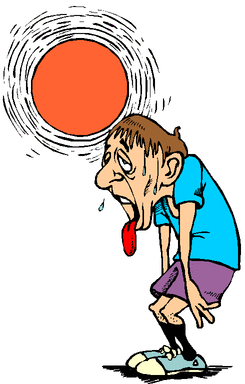
Understanding Infra-Red Heat

HOW DO YOU BEAT THE HEAT IN THAILAND?
Thailand is hot all year round and gets more than 300 days per year of extremely hot unbroken sunshine, which is great if you come from a cooler and
rainy climate. But what is the point of living in paradise in your luxury villa or apartment if you have to have the curtains or blinds closed all the time because of excessive heat and annoying glare.
By selecting and installing the right type of film you can enjoy your home so much more, and at the same time save money on your air-con bills.
There is a lot of information on the internet about different types of films and what they can do. When you start to look at the facts and figures it can become very confusing and in some cases contradicting.
Different factors affect the heat reducing capabilities of window film, these can be the quality, level of tint, type of material used, customers budget, reflectivity, and even the colour of the film.
Many customers just look for a high Infra Red Rejection number with some of the most expensive films having a very high number. Some of these films suppliers say they can block more then 90% of Infra Red heat, this is great, BUT! while it is an important number, there are other solar wave lengths that affect the heat. Infra Red is approx 49% of the spectrum, Visable light is another 49% and UV is about 2%. Also in many cases they only state the IR heat reducing capabilities for part of the infra red wave length which can be misleading..
It is easy to get confused, as when you see a film saying it blocks more than 90% of Infra Red heat, it gives the impression that only 10% of the heat gets through while 90% is stopped. It just doesn't work like that, because if it did, you could do away with aircon systems altogether or not use the aircon in your car, and as you know that is impossible.
So what does this all mean? Well the European federation of window film manufacturers and the USA equivalent use a combination of these heat sources. They use TSER which stands for TOTAL SOLAR ENERGY REJECTION. Any good quality film will have an effect on reducing heat, but a TSER number above 45 would in my opinion be good choice for heat reduction, then combining it with the other aspects you want from the film ie: colour, level of tint, privacy, quality and guarantee will ensure you get the right window film.
Not every customer requires the same thing, some people require privacy with a slight heat reduction, some want an un affected view with good heat reduction, some want a dark film in the bedroom and a lighter film in the living areas, everybody is different, so with over 60 different types of films to choose from, Solarkool.biz can help.
As a guide, for selecting a window film with a focus on high heat reduction, then look at these numbers.
Total Solar Energy Rejection (TSER) 50% or more will have a big impact on the heat reduction.
In my opinion 45% TSER is fair, 50% is good, 55% is very good, and above 60% is excellent
As mentioned above the amount of light (VLT) that a window film lets in is a personal choice, but our best selling films are between 20% - 40% VLT.
Please contact us if we can help in any way.
Solarkool © 2009, 2010, 2011, 2012, 2013, 2014, 2015, 2016, 2017












